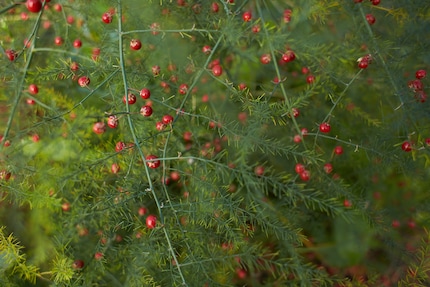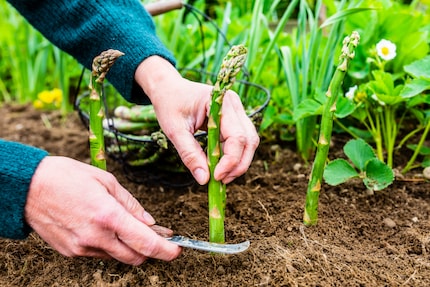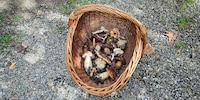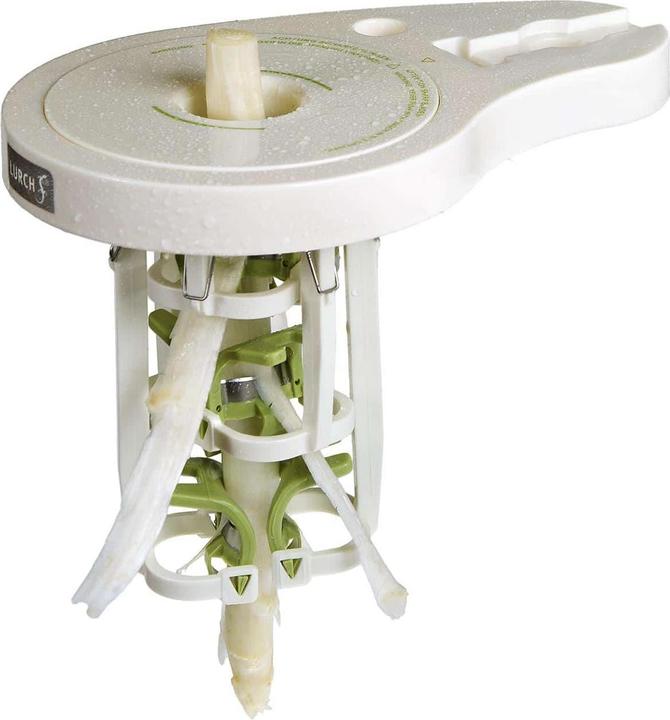

Asparagus season is here! 10 curious facts on the spring vegetable
Not everybody’s pee stinks after eating asparagus. There is, however, one constant when it comes to this spring vegetable. Regardless of when asparagus season starts, it always ends on exactly the same day. As you’re about to find out, this isn’t the only weird and wonderful factoid about the so-called queen of vegetables.
Spring is making asparagus season interesting this year. Though T-shirts and shorts are yet to make their outdoor debut, at least asparagus plants have peeked their heads through the soil. According to a press release (in German) published by the VSPG (Professional Association of Swiss Vegetable Producers) a few days ago, this year’s asparagus season started almost two weeks later than in previous years. Now, however, it’s in full swing.
Despite having difficulty getting off the ground, this year’s already-short asparagus season won’t be extended. So why is that the case? Come to think of it, why might your pee smell strong after eating asparagus? And why are these pricey greens best eaten with your hands? With these ten asparagus facts, you’ll be the one with all the answers.
1. Asparagus season always ends on the same day
The asparagus harvest is temperature dependent. As long as the soil temperature is below eight degrees, the shoots don’t sprout. It’s only when the mercury hits ten degrees that the plants start to grow gradually. That’s why the Swiss asparagus season started two weeks late this year. Despite the late start, the season will only last until mid-June. The literal cut-off date is 24 June, also known as Asparagus New Year’s Eve. Traditionally, this is when the last asparagus spears are cut. The reason? An old piece of countryside wisdom, which states that at least 100 days should pass before the first frost. This gives the plant enough time to regenerate and grow back.
2. Not everyone’s pee smells after eating asparagus
There are two types of people: people who get really strong-smelling urine from eating asparagus, and people who don’t. This is caused by a mixture of asparagusic acid and genes. In a lot of people, asparagusic acid breaks down during digestion to produce sulphuric by-products, which cause an odour. There’s a particular enzyme responsible for this breakdown – but not everybody has it. In any case, according to geo.de (article in German), 60 per cent of people report no discernible smell in their urine after eating asparagus. Some people, however, just don’t pick up on the stench; there are people with a mutation in the corresponding olfactory receptor gene.
3. Asparagus is mostly water
Asparagusic acid is only a minor component of asparagus stems. The vegetable consists primarily of water – 93 per cent, according to Planet-wissen.de (page in German). Around four per cent of an asparagus is carbohydrates, and only 0.2 per cent is fats. However, asparagus does contain minerals such as potassium and calcium. Compared with its white sibling, green asparagus is healthier; it contains more vitamin A and C, as well as folic acid.
4. Only white asparagus needs peeling
Another plus point of green asparagus is that you don’t have to peel it. It’d actually be silly to do so as most of its vitamins are found right under the skin. White asparagus, on the other hand, needs to be peeled. Not because it’s poisonous, but because the peel tastes bitter. You should generally always peel the stems from the top down so that you don’t damage the tender tips.
5. Asparagus is poisonous
You can’t just eat asparagus without a second thought – it’s classed as a poisonous plant. However, this doesn’t apply to the stem itself. Instead, it’s the red berries growing from the flowers that are poisonous. Yep, asparagus, too, sprout flowers and berries if you let them grow for long enough. Eating as few as five to seven of them can cause abdominal pain or vomiting, as warned by the Giftzentrale Bonn (Poison Control Centre) (page in German).

Source: Shutterstock/Irene Fox
6. Asparagus gets its colour from the sun
Green and white asparagus are the same – physiologically at least. The difference comes from the way it’s cultivated. White asparagus grows underground and is cut as soon as the tips break the surface of the earth. As a result, it stays white. Green asparagus grows above ground, taking on its green hue through direct sunlight.
7. Asparagus should be squeaky
You can spot fresh asparagus spears by the sound they make. Pick up two or three of them and rub them together. If you hear a soft squeaking sound, they’re fresh. They’ll last for longer if you wrap them up in a damp cloth and store them in the fridge. That way, the stems don’t dry out.
8. Asparagus: the queen of vegetables
Asparagus is one of the most expensive vegetables there is. This is because, even today, harvesting it involves laborious manual work; the stems are individually hand cut. Not only that, but the vegetable only produces its first real harvest three years after it’s planted. This is another reason why asparagus is considered the queen of vegetables.

Source: Shutterstock/iMarzi
9. Asparagus tips go on the left of the plate
Despite asparagus’ exclusivity, you don’t need to whip out the expensive silverware to eat it. Silver reacts to the sulphur compounds and turns black, so in the olden days, it was good manners to eat asparagus by hand. These days, there’s another etiquette rule: asparagus tips should go on the left-hand side of the plate and be eaten from left to right, from tip to end.
10. Spargarophobia (fear of asparagus)
Some people are afraid of spiders, others are scared of the number 13 and some people have a fear of asparagus (spargarophobia). Although it may sound strange, it doesn’t seem to be all that rare. According to Stern.de (article in German), textbooks classify it as a common phobia. Oh well, at least spargarophobia sufferers only have something to fear between May and 24 June.
Header image: Katja Fischer
Mom of Anna and Elsa, aperitif expert, group fitness fanatic, aspiring dancer and gossip lover. Often a multitasker and a person who wants it all, sometimes a chocolate chef and queen of the couch.
Interesting facts about products, behind-the-scenes looks at manufacturers and deep-dives on interesting people.
Show allThese articles might also interest you

Background information
Why picking mushrooms with your family is fun, even without specialist knowledge
by Martin Rupf

Background information
Putting the pickle juice trend under the microscope
by Siri Schubert

Background information
Chopping boards: wood or plastic, that is the question here
by Martin Rupf

